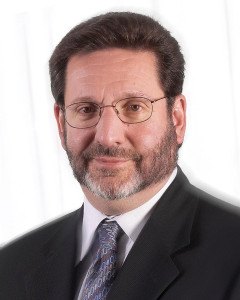FROM THE ARCHIVES: A VINTAGE CARRIER MANAGEMENT ARTICLE FROM 2014.
Five CEOs in seven years, a revolving door of senior leadership that is making rating agencies and the entire insurance industry wonder what is going on at Fireman’s Fund Insurance Co. Add to this the September 2014 decision by parent company Allianz to absorb the insurer’s commercial lines business, and something smells rotten in Novato.
Executive Summary
Leadership experts discuss the high cost of CEO turnover and the possibility of a parent-sibling culture clash between Allianz and Fireman’s Fund in the wake of recent news from Novato, Calif. and Munich, Germany.There is an update to this article. See related article, Allianz Announces New Leadership for Fireman’s Fund, AGCS NA Combo.
Now comes word that Allianz is considering “strategic options” for Fireman’s Fund’s personal lines insurance business. If this line also is absorbed, there goes an historic American insurance brand, founded in 1863 in San Francisco with the mission of providing 10 percent of its profits to the widows and orphans of firefighters killed in the line of duty—hence its unusual name.
Then again, one cannot dismiss the Novato, Calif.-based insurer, given its legacy of rising from the ashes. Through the decades, the Fireman’s Fund endured its share of setbacks, losing roughly $500,000 in claims from the Great Chicago Fire in 1871 and more than $11.2 million from the 1906 San Francisco earthquake. At the time, few believed the company would endure—its assets were estimated at a paltry $7 million.
 Fireman’s Fund survived thanks to a $300 assessment paid by each of its stockholders. The insurer took its claimants’ word that they would pay the assessment—all records had been destroyed by the earthquake. It then settled the 8,600 claims filed in the aftermath of the disaster, paying half in cash and half in new stock. The company persevered to insure some pretty notable risks thereafter, including the construction of the Golden Gate Bridge and Charles Lindbergh’s Spirit of St. Louis airplane on its trans-Atlantic crossing in 1929.
Fireman’s Fund survived thanks to a $300 assessment paid by each of its stockholders. The insurer took its claimants’ word that they would pay the assessment—all records had been destroyed by the earthquake. It then settled the 8,600 claims filed in the aftermath of the disaster, paying half in cash and half in new stock. The company persevered to insure some pretty notable risks thereafter, including the construction of the Golden Gate Bridge and Charles Lindbergh’s Spirit of St. Louis airplane on its trans-Atlantic crossing in 1929.
So, the latest news coming from the West Coast is a downer, to say the least. Not that these decisions are surprising—they’re not. Fireman’s Fund has lagged its competitors in many markets, and its reserve policies are a study in contrast. Over the past five years, it has strengthened reserves for workers compensation and asbestos losses, while many other insurers have released reserves.
“Where most if not all leading property/casualty companies have benefited year after year from favorable developments on reserves, Fireman’s Fund has stumbled repeatedly, particularly with respect to reserves in its commercial lines book,” says Alan Murray, senior vice president and insurance analyst at Moody’s Investor Service. “They clearly have some challenges in their core business lines.”
Jim Auden, managing director of the insurance ratings group at Fitch, shares this opinion. “They don’t stack up too well against peers,” says Auden. “For the past five years, they’ve been troubled with underwriting losses, poor returns on capital, and they’re just not generating capital. Fortunately, they’ve had Allianz as a very supportive parent, providing capital when needed to offset adverse reserve developments. Still, one wonders how much longer Allianz will continue in their support.”
Auden’s point resonates. While Allianz acquired Fireman’s Fund in 1991 to enter the U.S. insurance market (the world’s largest), its own name may have more clout now than the brand of its beleaguered stepchild.
“We rate Fireman’s at an ‘A’ from a credit perspective, which denotes strong financial strength in its ability to pay claims, but three full notches of this rating is attributable to the financial support of the parent,” says Michael Gross, director and primary analyst for Fireman’s Fund at Standard & Poor’s. “Without this support, it would be looking at a ‘BBB.'”
He adds, “This is a company that has had its share of challenges.”
Musical Chairs
Among them is the procession of people in the CEO’s office. Current CEO Andrew Torrance, appointed in 2013, replaced Lori Fouché, who replaced Michael LaRocco, who replaced Chuck Kavitsky, who replaced Joseph Beneducci. Kavitsky actually served as CEO twice, so one can construe that the insurer actually has had six CEOs in seven years.

Each time a new CEO took the helm, the occasion was marked with words of great optimism. For instance, Fouché told the San Francisco Business Times that she anticipated the insurer would achieve by 2014 “the kinds of results we’d expect from a Fireman’s Fund type of organization.” Sadly, the results did not materialize. The headline of the article was “Fireman’s CEO puts out flames.”
The flames are still smoldering, as another CEO steps in to put them out. Is there anything wrong with so many business leaders in such a short period of time?
The answer is yes. “Stability in leadership is a factor that can help a firm’s performance, particularly in times that are volatile and unpredictable, which the insurance industry certainly experiences,” says Rita McGrath, an associate professor at Columbia Business School and author of the new book “The End of Competitive Advantage.”
“The new CEO comes in and needs to make new footprints, which means lots of changes in strategy.”
CEO turnover also is enormously expensive and tends to draw an organization’s focus and energy away from more productive pursuits. “Everything comes to a crashing halt while the whole company plays musical chairs,” McGrath explains. “The message comes across that the company is either fundamentally lacking in good leadership or otherwise suffering from some flaw that causes a parade of executives to just pass through.
“The reputational damage is significant. What qualified person would want to take a job that appears to be designed to fail?”
Former CEO Kavitsky, who also served as CEO of life insurer Allianz of America, blames the persistent leadership changes on the widely divergent cultures in place at Allianz and Fireman’s Fund.
“Philosophically, Allianz Global is extremely conservative in everything they do,” Kavitsky says. “They’re one of those companies that if they experience exponential growth, they’re more afraid of that than a small loss, whereas we in the U.S. tend to be more entrepreneurial. For example, I come from a marketing and sales background. I’d try five different things and if one worked well that would create an incredible year. Allianz would rather see more incremental growth.”

Kavitsky is quick to add he has no criticisms of Allianz, which he considers a great company. But, he also points out the global insurer’s dislike of mercurial leadership. “They don’t like overconfidence, which they perceive as aggressive behavior—even though the person might be able to make big leaps,” he explains. “We’re just cut from a different cloth in the U.S.”
This difference may explain why Allianz appointed Torrance, a Brit, as CEO. “Andrew’s a great guy with a steady reputation, and he is a lot closer to the Germans in the sense he favors incremental growth,” Kavitsky opines. “He’s not going to take big jumps. For now I would imagine he’s working hard simply not to lose ground.”
Culture Clash
The apparent culture clash between Allianz and Fireman’s Fund is not atypical. Yet, such conflicts often result in trouble—the case with the AOL-Time Warner merger and Sony’s ill-fated acquisition of Columbia Pictures in 1989. The former is a classic study in failed due diligence. Time Warner’s culture of semi-autonomous fiefdoms led by conservative managers was well known, yet both parties did not realize how difficult it would be for these business leaders to submit to the decisions of younger AOL executives in jeans and polo shirts.
With regard to Sony, the company was a consensus-driven Japanese organization dominated by engineers, designers and an entrepreneurial co-founder. Columbia Pictures, on the other hand, was the prototypical “seat of the pants” Hollywood studio. The divergent cultures failed to mesh, and the merger quickly unraveled.
McGrath, who has studied the reasons behind failed mergers, agrees that operating a subsidiary in a foreign country with a markedly different culture is challenging. “The difference between German parent culture and American parent culture can be considerable,” she says.
“Germans tend to be more conservative and risk-averse. Some insurance products that are par for the course in the U.S., such as workers compensation, are seen as undesirable or even distasteful to a German parent. From what I know of Fireman’s Fund culture, it was not exactly hard-charging and results-driven. Michael Diekmann, who set about forging this global insurance giant at Allianz, is exactly the opposite—he’s quite demanding,” McGrath says. Diekmann was appointed CEO of Allianz in 2003.
Robert Ployhart teaches about the lessons of botched acquisitions as Bank of America professor of business administration at the University of South Carolina. He, too, concurs that cultural differences in a merger rarely turn out well, post-transaction. “Everyone is looking at the financials in their due diligence, and [they] think this alone is all that is needed for success,” Ployhart says. “They look at something as intangible as a company’s culture and downplay the significance. Yet, recent history clearly shows this is one of the big reasons why so many mergers and acquisitions fail. Sooner or later, it takes a toll.”
Culture alone does not explain Fireman’s Fund’s poor performance relative to its peers. Gross from S&P believes its expense structure has obviated needed investments in technology for underwriting purposes. “When most insurers have re-domesticated to cheaper regions, Fireman’s headquarters is in a relatively expensive and therefore disadvantaged location,” he explains. “This may explain why they haven’t invested much in technology and data analytics. And that could indicate a reason for their relatively weak underwriting performance, compared to peers.”
What‘s Next?
Can Fireman’s Fund pick up the pieces, as it did when great fires and earthquakes nearly wrote its epitaph? No observer questions whether or not Allianz will remain in the U.S. market. But few believe the Fireman’s Fund brand will remain intact, much less its operating structure.
“History shows that Allianz has folded in a good part of Fireman’s into its business,” says Gross. “Obviously, it continues to do this. When they announced they would absorb the commercial lines business, we asked them what they planned to do with personal lines. They didn’t respond. We have just as many questions as you and others do.”
Kavitsky sees clearer writing on the wall. “Frankly, I would be shocked if we don’t see Allianz P/C someday,” he says. “I can tell you that when I ran the company, we were having those discussions back then. What held the decision back was the people at Fireman’s—their tremendous amount of love and respect for the brand. They didn’t want to be absorbed within this massive company. I would imagine these feelings remain the case today. The question is if they will hold sway.”
Were Allianz to absorb every last morsel of Fireman’s Fund, the irony is that it would likely result in some ratings uplift, says Gross. “But, if we get word they intend to shop the personal lines business or split the company off, that could be a real downside for Fireman’s. Right now, we remain in the dark on what the plans are, which is why we have them on credit watch.”
The ball is in Allianz’s court. “We’re holding out hope that they can reinvigorate the brand in the marketplace,” Gross adds. “Or maybe go to dual branding, given the value of the Allianz name. For now, it’s wait and see.”





















 Berkshire Hathaway Announces Leadership Appointments: New CEO at GEICO
Berkshire Hathaway Announces Leadership Appointments: New CEO at GEICO  Bankers Readying U.S. IPOs at ‘Overwhelming’ Pace Ahead of 2026
Bankers Readying U.S. IPOs at ‘Overwhelming’ Pace Ahead of 2026  Water Leaks, Frozen Pipes Top List of Small Business Claims: The Hartford
Water Leaks, Frozen Pipes Top List of Small Business Claims: The Hartford  Viewpoint: Mapping Evolving Regulatory Terrain for MGAs, MGUs and Other DUAEs
Viewpoint: Mapping Evolving Regulatory Terrain for MGAs, MGUs and Other DUAEs 







